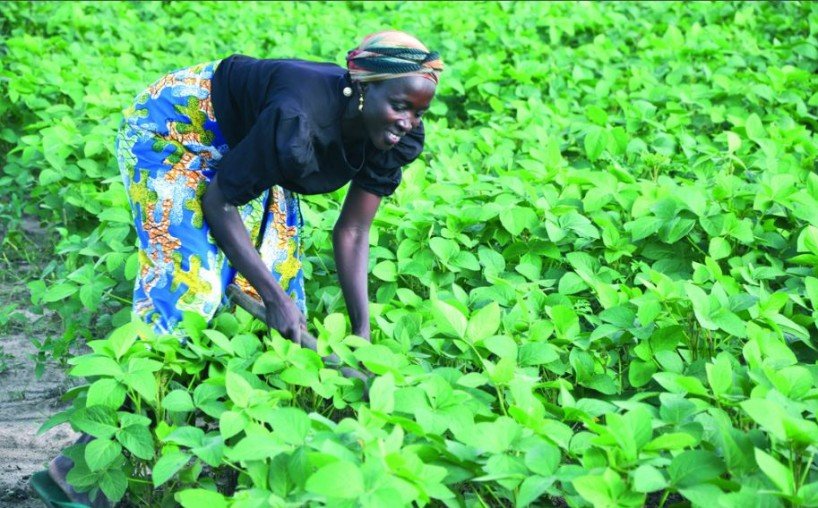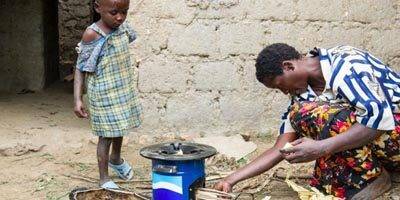
Food sovereignty is mandatory for the starving children
(Source: FMSC Distribution Partner – Kenya)
The debate over food is polarized. In the diplomatic world, hunger is more often discussed in terms of food security. Grassroots movements, on the other hand, are more concerned with food sovereignty as they aim at empowering small-scale farmers.
Nonetheless, cooperation between both sides began in October 2013. Watch the video on the FAO and Via Campesina cooperation.
Food security
“Food security exists when all people, at all times, have physical and economic access to sufficient, safe and nutritious food to meet their dietary needs and food preferences for an active and healthy life.” (FAO, 1996)
Key words: Food Accessibility, Food Stability
Food sovereignty
“Food sovereignty is the right of peoples to healthy and culturally appropriate food produced through ecologically sound and sustainable methods, and their right to define their own food and agriculture systems.” (Declaration of Nyeleni, 2007)
Key words: Food as a Human Right, Community Empowerment, Autonomous Decision-Making
It is widely acknowledged that global hunger is not due to food supply scarcity, but rather to a severely limited access to food for the poorest populations. The definition of food security is restricted to accessing enough food to eat, but omits the importance of community empowerment in fulfilling such needs. Simply providing food aid (i.e. giving food to poor people) does not empower local populations and can further harm them by not providing them with the adequate tools to secure their food needs. Food sovereignty emphasizes the idea that farmers must be capable of producing agricultural products independent of the world market for commodities. CSJ specifically focuses on food sovereignty because of it considers access to food as a human right.
Ideas Inherent to Food Sovereignty
- 1) Food sovereignty is about people
- 2) Food sovereignty develops knowledge and environmentally friendly agricultural techniques
- 3) Food sovereignty respects the Pachamama (Mother Earth)
- 4) Food sovereignty is sustainable
- 5) Food sovereignty acts locally
- 6) Food sovereignty sees food as a gift from Earth, not as a commercial product

Woman in food production
(Source: International Institute)
History of Food Sovereignty
Watch the video on the history of food sovereignty
Year 1993
Creation of La Via Campesina, an international movement advocating food sovereignty. Food is understood in terms that go beyond mere commodities, food is a right.
Year 1996
La Via Campesina officially declares the concept of food sovereignty at the UN Food and Agriculture Organization (FAO) during the World Food Summit held in Rome to discuss hunger. This summit culminated in the Declaration on World Food Security.
Statistics on Food and Hunger
-842 million people suffer from chronic hunger around the world, 827 million of them come from developing countries
– Most hungry people live in Asia (500 million), but sub-Saharan Africa has the greatest prevalence of hunger (24.8%)
– Malnutrition causes 45% of the deaths of children aged under 5 years old (total of 3.1 million children yearly)
– 1 out of 6 children in developing countries is underweighted (total of 100 million children)
– In developing countries, 66 million children go to school hungry
– 88% of farms are family owned (500 million out of 570 million family farms)
– Overall, family farms are responsible of 56% of the global agricultural production
– Family farming constitutes 18% of the total agriculture in South America, 62% in African and 85% in Asia
– Rice is one of the primary food products in the world; 3.5 billion people depend on rice to fulfill their dietary needs
For further details, please visit
Food Issues in Specific Countries
| Bolivia | Ethiopia | Bangladesh | |
|---|---|---|---|
| Total Population(million) | 10.2 | 86.5 | 152.4 |
| Number of Undernourished People(million) | 2.2 | 32.1 | 24.8 |
| Prevalence of Undernourishment | 21.3% | 37.1% | 16.3 % |


